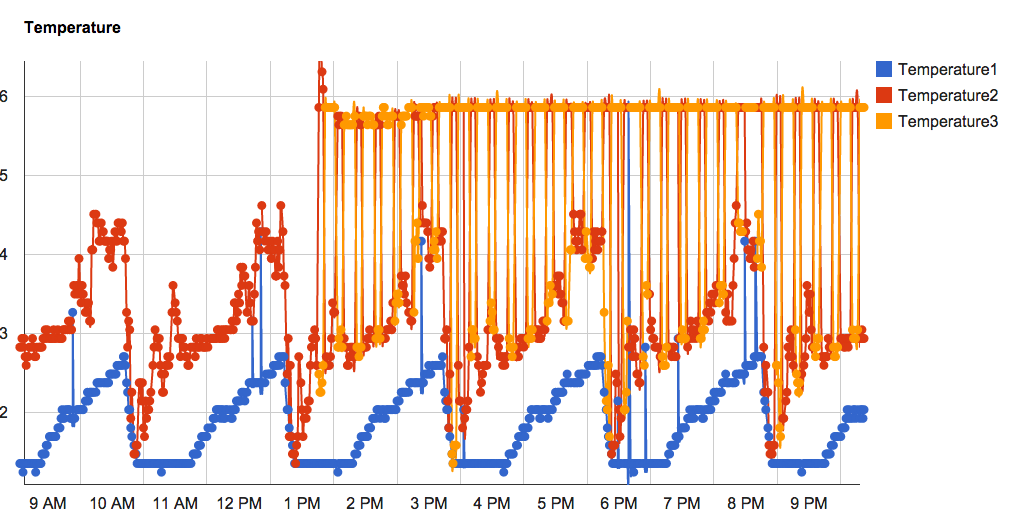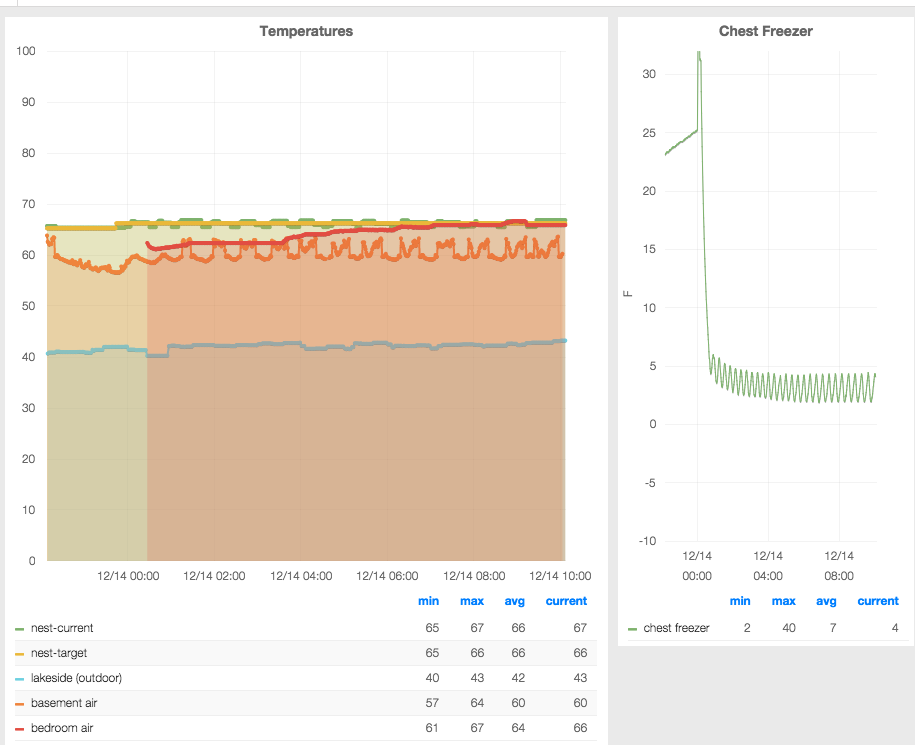LibUSB and Python to Overcome Bad USB Design
13 Dec 2014Last October, I began recording temperatures for my homebrew setup. It used a C program called pcsensor that someone reverse-engineered from the Windows version available on the CD that came with my TEMPer1v1.4 sensors.
The problem with these sensors is that they have no unique identifier - reading the value in from pcsensor with multiple sensors installed often resulted in the data series being mixed together, because there was no “order” to the way data was being read into the parser.
Here’s a demonstration of what I mean:

Notice how the order of the orange and red points switch a lot? This made it really difficult to analyze the temperatures in my setup, apart from using a human to look at the trendline created by the mix of points.
I spent some time trying to create a driver for these TEMPer sensors, but in the end I was able to find one by Phillip Adelt that uses libusb and pyusb - libraries that allow you to talk to USB devices with Python.
git clone https://github.com/padelt/temper-python.git
cd temper-python
sudo python setup.py installThe ingenius thing that Phillip did was to determine the port and bus of each sensor - thus giving it a “unique ID” based on where it was physically plugged into the computer!
His module installs itself as “temperusb”, so I wrote a quick script to read the value of the sensors:
#!/usr/bin/python
# encoding: utf-8
from temperusb import TemperHandler
import json
th = TemperHandler()
devs = th.get_devices()
for i, dev in enumerate(devs):
temps = dev.get_temperature(format="fahrenheit")
ports = dev.get_ports()
bus = dev.get_bus()
print (bus, ports, temps)Linux limits which users can access raw USB data, so we either need to install some udev rules or run the script as superuser. Sudo is easiest for me. It outputs something like:
fred@brewery:~$ sudo python temper_read.py
[sudo] password for fred:
(2, 2, 56.8625)
(2, 1, 22.1)
fred@brewery:~$The bus and port will be consistent, even if the order of the entries gets switched. Now we can depend on the results of these sensors, and send them to InfluxDB:
#!/usr/bin/python
# encoding: utf-8
from temperusb import TemperHandler
import json
import socket
hostname = socket.gethostname()
th = TemperHandler()
devs = th.get_devices()
from influxdb import InfluxDBClient
client = InfluxDBClient('hostname', 8086, 'root', 'root', 'temperatures')
for i, dev in enumerate(devs):
d =[]
ports = dev.get_ports()
bus = dev.get_bus()
d.append({"points":[[i, dev.get_temperature(format="fahrenheit"), ports, bus]], "name": "%s_temper_%s_%s" % (hostname,ports, bus), "columns": ["index", "temperature", "port", "bus"]})
try:
client.write_points(d)
except:
raise Exception("Couldn't connect to influxdb")
print "Couldn't connect to InfluxDB"
print json.dumps(d,indent=2)I put this in the superuser’s crontab:
sudo crontab -e# m h dom mon dow command
* * * * * /usr/bin/python /home/fred/temper_influx.pyThis sends the available temperatures to InfluxDB once a minute.
Which leaves me very happy with my temperature-monitoring setup:
